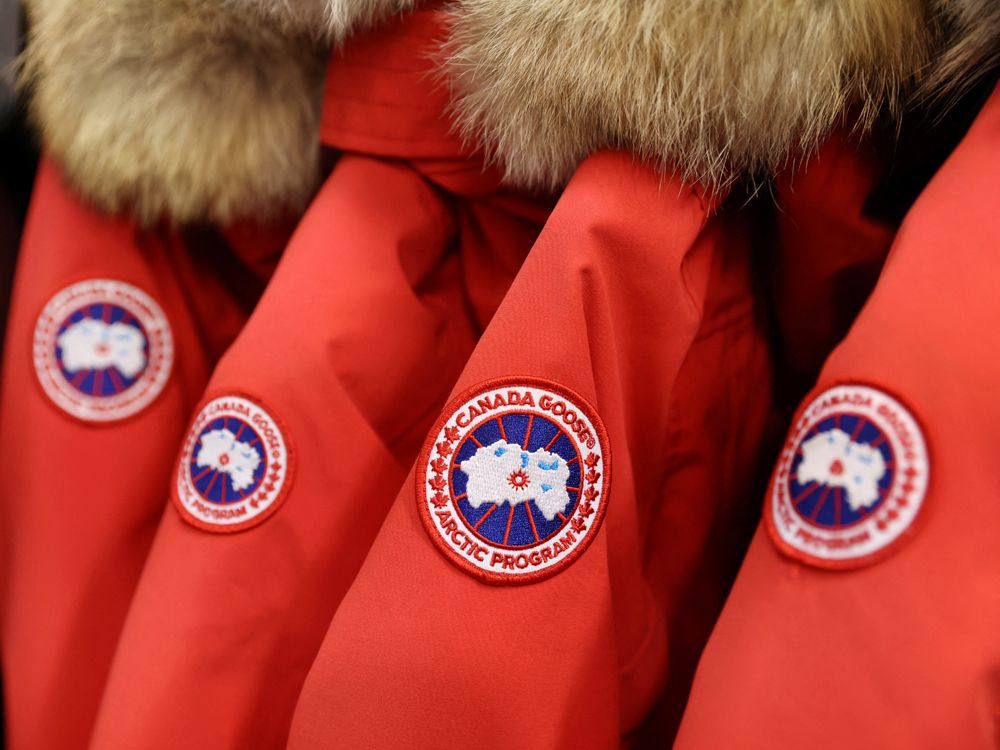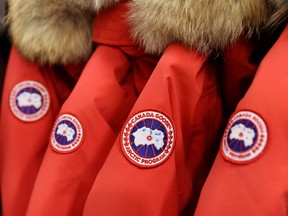Canada Goose shares fall after parka-maker cuts outlook over Omicron disruption

Revenue lower than expected in Asia and Europe amid new COVID-19 outbreaks

Article content
Canada Goose Holdings Inc.’s sales rose in its fiscal third quarter in what was a busy holiday and winter season but lower-than-expected revenue in Asia and Europe plus new COVID-19 outbreaks caused the company to cut its guidance.
Advertisement
Story continues below
This advertisement has not loaded yet, but your article continues below.
Article content
Shares were down 9 per cent in pre-market trading after falling almost 12 per cent.
Revenue of the luxury parka-maker grew to $586.1 million in the third quarter ending Jan. 2, 2022, a 26.5 per cent increase from the year before. E-commerce and direct-to-consumer sales helped boost top-line growth, the Toronto-based company reported on Thursday. On a per-share basis, earnings were US$1.42.
“Canada Goose’s brand momentum and supply chain resilience drove a strong performance in our largest quarter,” CEO and president Dani Reiss said in a press release. “Our digital business continued to exceed last year’s outsized gains, alongside a sharp improvement in retail productivity.”
The positive growth suggests the company built up strength to push through headwinds that come from a shift to higher interest rates in many of Canada Goose’s most important markets. However, it did reduce its guidance to between $1.090 billion and $1.105 billion, down from the guidance it provided in November of between $1.125 billion and $1.175 billion. Thursday’s earnings puts it $214.7 million away from meeting the bottom of its latest projection.
Advertisement
Story continues below
This advertisement has not loaded yet, but your article continues below.
Article content
Canada Goose should be able to weather an overall drop in consumer spending because the demographic that can afford $1,000-parkas will be relatively unaffected by any downturn, Goldman Sach analysts Brooke Roach and Julie Hoover wrote in a December report.
“We believe the wealth effects and spending impulses of the consumer with higher income will be greater in an environment of inflating essential goods costs,” Roach and Hoover wrote. “All else equal, we prefer brands with higher opening price points in an environment of rising costs, as the opportunity to drive modest mix shift price increases is likely to be less noticeable to the consumer at a higher range than a fixed low-cost item.”
Online sales and purchases at Canada Goose retail stores grew to $445.4 million from $299.4 million year over year. Growing those two channels has been a key focus for the luxury brand over wholesale purchases since it can make more money selling directly to consumers.
Advertisement
Story continues below
This advertisement has not loaded yet, but your article continues below.
Article content
-

Chinese state media warns Canada Goose may have violated consumer law
-

Canada Goose pledges to stop using fur by 2022
Another area the company is paying particular attention to is China. It received flak in autumn and winter last year over its return policy in Asia’s largest country. Calls for boycotts of the brand arose late last year after consumers complained they were barred from returning clothing even within the policy time limit. Consumers complained about discrimination by Canada Goose, which first launched its flagship store in Beijing in 2018.
Chasing Chinese customers, though, is core for the brand that’s pursuing big spenders on the mainland, especially after the pandemic battered luxury-buying tourism. Direct-to-consumer growth in China rose 35.1 per cent compared to a year prior, Canada Goose reported.
The Toronto-based company also counts on tourists seeking out purchases on the high streets in Europe. Travel restrictions and government-mandated business closures here impacted profitability.
A lack of supply-chain troubles helped the flow of winter jackets and other luxury items continue when bottlenecks became a big concern for companies ahead of the holiday season. Canada Goose has credited its domestic production as the reason, with eight factories in the country, Bloomberg reported in November.
• Email: [email protected] | Twitter: biancabharti
Advertisement
Story continues below
This advertisement has not loaded yet, but your article continues below.







